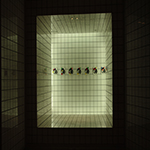Euroacademia Conferences
 Europe Inside-Out: Europe and Europeanness Exposed to Plural Observers (9th Edition) April 24 - 25, 2020
Europe Inside-Out: Europe and Europeanness Exposed to Plural Observers (9th Edition) April 24 - 25, 2020 Identities and Identifications: Politicized Uses of Collective Identities (9th Edition) June 12 - 13, 2020
Identities and Identifications: Politicized Uses of Collective Identities (9th Edition) June 12 - 13, 2020 8th Forum of Critical Studies: Asking Big Questions Again January 24 - 25, 2020
8th Forum of Critical Studies: Asking Big Questions Again January 24 - 25, 2020 Re-Inventing Eastern Europe (7th Edition) December 13 - 14, 2019
Re-Inventing Eastern Europe (7th Edition) December 13 - 14, 2019 The European Union and the Politicization of Europe (8th Edition) October 25 - 26, 2019
The European Union and the Politicization of Europe (8th Edition) October 25 - 26, 2019 Identities and Identifications: Politicized Uses of Collective Identities (8th Edition) June 28 - 29, 2019
Identities and Identifications: Politicized Uses of Collective Identities (8th Edition) June 28 - 29, 2019 The European Union and the Politicization of Europe (7th Edition) January 25 - 26, 2019
The European Union and the Politicization of Europe (7th Edition) January 25 - 26, 2019 7th Forum of Critical Studies: Asking Big Questions Again November 23 - 24, 2018
7th Forum of Critical Studies: Asking Big Questions Again November 23 - 24, 2018 Europe Inside-Out: Europe and Europeanness Exposed to Plural Observers (8th Edition) September 28 - 30, 2018
Europe Inside-Out: Europe and Europeanness Exposed to Plural Observers (8th Edition) September 28 - 30, 2018 Identities and Identifications: Politicized Uses of Collective Identities (7th Edition) June 14 - 15, 2018
Identities and Identifications: Politicized Uses of Collective Identities (7th Edition) June 14 - 15, 2018
Memory of Absence: Krakow’s Jewish Ghetto Memorial as Counter-Monument
-
-

-
Presentation speakers
- Sabrina DeTurk, College of Arts and Creative Enterprises, Zayed University, Dubai, United Arab Emirates
- Download presentation
Abstract:
In 1992, scholar James Young published an article in Critical Inquiry examining the rise of the counter-monument in Germany as a memorialization strategy particularly suited to a country seeking to remember and honor the victims of its own national crimes. Although Young was particularly interested in vanishing monuments, such as the Harburg Monument against Fascism designed by Jochen Gerz and Esther Shalev Gerz, his description of the characteristics of a successful counter-monument fits numerous Holocaust monuments and memorials erected not only in Germany but across Central and Eastern Europe in recent years. According to Young, the counter-monument provokes its viewers, demands interaction, has the possibility to change over time and insists that memory work be the burden of the viewer not of the monument itself. Krakow’s Jewish Ghetto Memorial, the so-called “empty chairs memorial,” was designed by architects Piotr Lewicki and Kazimierz Latak and inaugurated in 2005. The Ghetto Memorial both occupies and blends into the civic environment of Plac Bohaterow Getta and intentionally invites interaction from passersby who use the chairs while waiting for public transportation. Its design reflects the specificity of its site (through its allusion to furniture being piled in the Square prior to the deportation of the Jews) while also employing design strategies used in other contemporary memorials such as those to the 1995 bombing at the Alfred P. Murrah Federal Building in Oklahoma City and to the 9/11 terrorist attacks at the Pentagon in Washington, DC. This paper examines Krakow’s Jewish Ghetto Memorial as an example of a counter-monument and considers its impact on viewers and its efficacy as a public memorial space.
-
Related Presentations

Eastern Europe as Other in Silent Cinema
- Adina Zidon

















